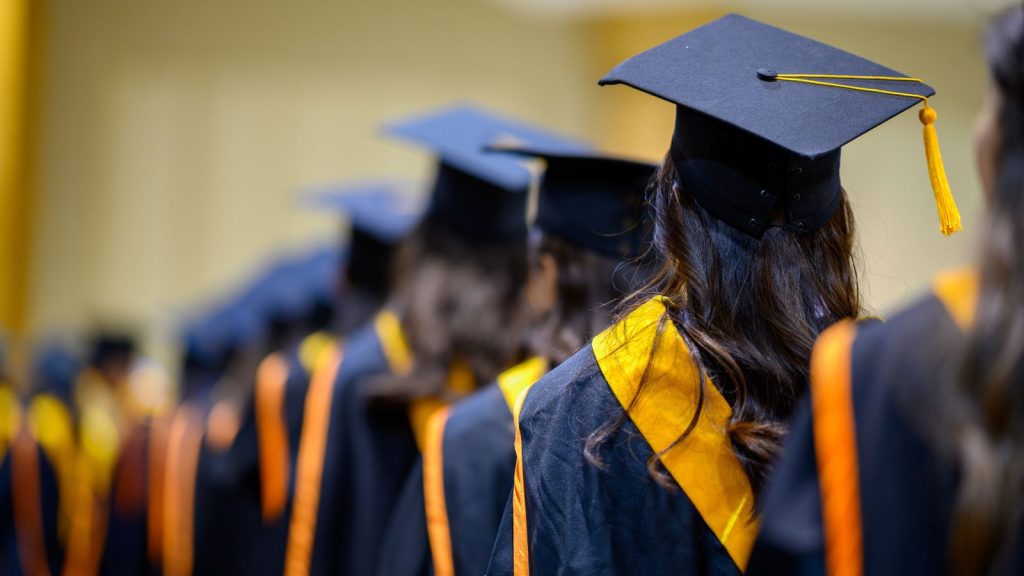(CNN) — Michael Christofield was thrilled to learn he was eligible for $10,000 in student loan forgiveness under President Joe Biden’s new program. Loan relief can help you keep your student loans out of debt by the time your children go to college.
“I’ll be in a position to help my parents in a way they couldn’t help me,” he said.
But before the application form was released, the Biden administration abruptly withdrew the plan. As a result, about 700,000 people with some types of federal loans, including Christofield, lost eligibility for loan forgiveness.
“They took it out of our hands,” said Christofield, 43.
The move affected older federal borrowers who, through no fault of their own, relied on private lenders rather than the government. The loans are at the center of a case continuing through the courts challenging the legality of Biden’s debt relief plan.
Biden administration officials have repeatedly said they are evaluating alternatives to forgive borrowers’ debts, but application forms for the program officially opened Monday without any updates.
“The government is working as quickly as possible to provide relief to as many people as possible,” Education Secretary Miguel Cardona told a news conference Monday.
However, an appeals court ruling on Friday put the program on hold, delaying loan forgiveness while the program is evaluated. The government had said it would start providing student loan waivers from Sunday.
Who will be left out?
The eligibility change, announced Sept. 29, excluded federal student loans guaranteed by the government, but from private lenders.
Most of these loans were made under the former Federal Family Education Loan Program known as FFEL and the Federal Perkins Loan Program.
Generally, borrowers have no choice between applying for a federal loan from the government or from a private lender. The FFEL program ended in 2010, so borrowers after that date may have direct loans that qualify for loan relief. Generally, FFEL and Perkins loans are serviced by the same agencies that service Federal Direct loans.
The federal government purchased some FFEL program loans during the Great Recession. But about 4 million of the 43 million federal borrowers still have an FFEL loan with a private lender. Initially, not all those individuals qualify for the loan forgiveness program because it includes an income requirement.
How many of those borrowers are eligible is calculated based on assumptions about their income and how many will apply for relief. The Biden administration said about 700,000 people have lost eligibility.
Many borrowers with federal private loans feel shortchanged. Their loans also did not qualify for the pandemic-related payment and interest moratorium that began in March 2020.
Borrower’s Desperation: “It’s Not Going To Happen”
Some borrowers with private federal loans may still qualify for forgiveness under Biden’s plan. But for that, they must have applied to consolidate their loans into federal direct loans by Sept. 29, about five weeks after the program was announced.
Paulo Calderon said he immediately considered consolidating his FFEL loans to qualify for debt relief. But when he called his loan servicer, consolidation wasn’t the best option for him.
“Actually, they told me there was no guarantee that the consolidation would qualify me for loan forgiveness,” said Calderon, 45, who has about $26,000 in student loans.
It is true that there are risks in integration. This can increase the interest rate and increase the monthly payment. In addition, debt relief applications have not yet begun, and the Biden administration said borrowers have until December 2023 to apply.

Activists hold student loan cancellation signs to demonstrate outside the White House in Washington on August 25, 2022. (Photo: Stephanie Reynolds/AFP via Getty Images)
Calderon continued to investigate, and although he was leaning toward consolidation, he did not make his decision before reading a September 29 newspaper article that discussed the change in eligibility criteria. He called his manager again that day, but it was already too late to coordinate.
“It was very frustrating. I was like, ‘This is not going to happen to me,'” Calderon said.
Why are some loans treated differently?
The Biden administration changed the eligibility criteria on the same day six GOP-led states filed a lawsuit alleging the president lacked the legal authority to forgive student loans.
The states also argued that student loan servicers, including the Missouri State Higher Education Loan Authority, known as MOHELA, were financially harmed by Biden’s student loan forgiveness plan. The suit argued that the scheme creates an incentive to consolidate MOHELA-owned central family education loans into government-owned direct loans.
By excluding these borrowers from the program, the Biden administration may have weakened the plaintiffs’ case.
On Thursday, the judge dismissed the case, ruling that the states lacked legal standing to file the challenge. The states immediately appealed, sending the case to the 8th Circuit Court of Appeals, where it is likely to go to a conservative panel of judges.
Who is still eligible for loan forgiveness?
Under Biden’s plan, eligible individual borrowers who earned less than $125,000 in 2020 or 2021 and married couples or heads of households who earned less than $250,000 annually in those years would have up to $10,000 of their loans forgiven.
If a qualified borrower also received a federal Pell Grant while attending college, that person is eligible for up to $20,000 in loan forgiveness.
Central Direct Loans including Subsidized Loans, Unsubsidized Loans, Parent Plus Loans and Graduate Plus Loans are also eligible.
Although FFEL and Perkins borrowers are ineligible to pay their bills on time, delinquent federal loans taken out under both programs are eligible.

“Music ninja. Analyst. Typical coffee lover. Travel evangelist. Proud explorer.”

:quality(85)/cloudfront-us-east-1.images.arcpublishing.com/infobae/TEQF6EONZRFGLLLDIDD4L2O4EE.jpg)

:quality(75)/cloudfront-us-east-1.images.arcpublishing.com/elcomercio/XU32LRAEZFDDPNVHLFU3CKVBYY.jpg)



More Stories
Earthquake in the US today, Wednesday, May 29 – Earthquake’s exact time, magnitude and location via USGS | USGS | composition
President Arrivalo is left with no alternatives to dismissing the Attorney General
Passenger dies after jumping off world’s largest cruise ship in Florida